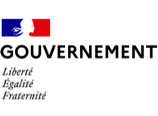Foreword
This diagnostic is based on a questionnaire composed of items related to:
- the my product(including one or more functionalities)
- its principal users,
- the desired business model.
This diagnostic is to be run through for a single product.
If the product is made up of several functionalities, I try as much as possible to think by functionality.
It's common for a product to have several functionalities with different purposes, Now, the financing modalities that can be envisaged may be cumulablebut the approaches and expectations will be different as they depend in particular on the type of user and the place of use.
Example of a solution with several functionalities: a digital orthopedic rehabilitation platform that offers both a personalized treatment support function for the patient and a general information function.
Example of a solution with several users: an application that connects young parents with pediatricians or nursery nurses to monitor their child's health.
What this diagnosis does:
- It encourages the innovator to think by "features"rather than considering the product as a whole. This helps to refine thevalue proposition: which functionalities bring the most value to users, and which have the potential to find market access or funding?
- It helps to define the key issues for refining thinking about product funding in France and the associated rules.
- It provides an initial insight into interesting avenues ofsources of funding.
What this diagnosis does not do:
- It does not present in detail possible business model modalities, with the exception of positive lists of funding from the Assurance Maladie (LPP, LATM...) or certain derogatory modalities (PECAN, forfait innovation...).
- It is not a substitute for personalized, in-depth advice from a market access expert to confirm possible financing avenues.

